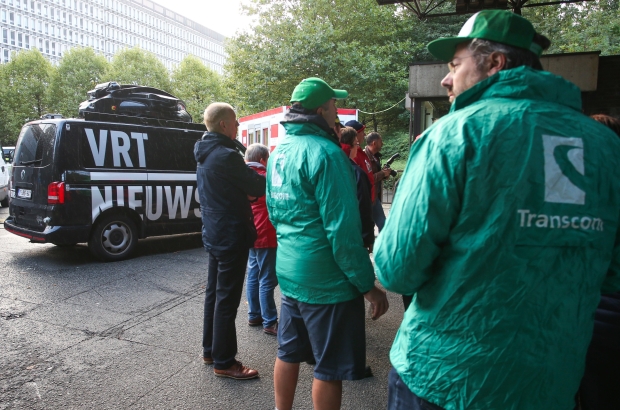- Daily & Weekly newsletters
- Buy & download The Bulletin
- Comment on our articles
Flemish broadcaster VRT criticised over use of colloquial Dutch
Flemish broadcaster VRT has come under fire for its use of a more commonly spoken form of the Dutch language, which some say is in violation of language laws that call for news broadcasts to be done in standard Dutch.
The Dutch language has a number of dialects with significant differences, as many foreigners attempting to learn it have undoubtedly discovered.
Even within Flanders itself, there are substantial differences between cities and provinces, from the 'Antwerps' spoken in Antwerp (which often includes French loan-words) to the West Flemish accent with its different pronunciations and even alternate sentence structures.
Between them all is a form of Dutch called 'Tussentaal', which translates literally to a 'between language'.
VRT has been questioned about the use of Tussentaal by some of its presenters and about the possibility of changing its language charter, RTBF reports.
There are actually multiple Tussentaalen (between-languages) spoken throughout the different regions of Flanders, but for the most part every Dutch or Flemish speaker is able to understand one another despite differences.
One of the best-known examples of a 'tussentaal-ism' was when the Flemish minister-president Jan Jambon said during a parliamentary debate at the start of his term of office: “Da gade gij nie bepalen,” which in English means: “You are not going to decide that.”
If using standard Dutch, Jambon would have said: “Dat ga jij niet bepalen.”
Other examples include “wa doedegij?” instead of “wat doe je?” (What are you doing?), or “ziedegij iets?” instead of “zie je iets?” (Do you see anything?) or “wa is dees?” instead of “wat is dat?” (What is that?).
While nearly everyone uses this Tussentaal on a regular basis in daily life, hearing it spoken on Flemish radio and television broadcasts has angered some.
Recently, news presenters Kim Van Oncen and Tom Waes have been criticised for using Tussentaal, and Waes in particular for regularly switching from standard Dutch to an Antwerp tussentaal, which irritated N-VA party founder Geert Bourgeois.
Bourgeois called on the Flemish parliament to question VRT on the subject, pointing out that as a public service, it is obliged to respect the language charter stipulating they may only use clear, correct and accessible Dutch.
That charter includes exceptions for fiction and comedy programmes, but not news broadcasts.
VRT's new language advisor Geertje Slangen announced that she would be updating the charter with the intent to bring the rules more in line with social reality. Standard Dutch would remain the norm for news programmes and for Ketnet, the children's channel, but more room would be made for informal language, regional variations and foreign accents.
The announcement caused such a stir that VRT had to issue a second announcement making clear they would not remove standardised Dutch as the starting point, but would also not back down on relaxations, leveraging the advantages of Tussentaal to make its programmes more accessible to a wider audience.
“There is no question of creating space for more in-between language,” VRT said in response to criticism. “There is room for language variation.”
French-speaking Belgians or non-Dutch speaking residents may wonder what all the fuss is about. Opponents of relaxing the language standards point out that Tussentaal is "full of mistakes and has gained a lot of ground in recent years".
Coupled with the fact that language scores for Flemish students have been declining, critics say more Tussentaal will lead to a further degradation of these skills.
It was also pointed out that people attempting to learn Dutch are often left confused about the “correct” way to speak, and that it’s therefore important for VRT to set the gold standard.
“There is room for language variation: informal conversations simply sound different from presentation language,” VRT insists, adding that 95% of its broadcasts are in standard Dutch.
“Language is a living organism, today we do not speak as we did 30 years ago. In VRT's language charter, we leave room for those evolutions, but correct Dutch remains the starting point.”














